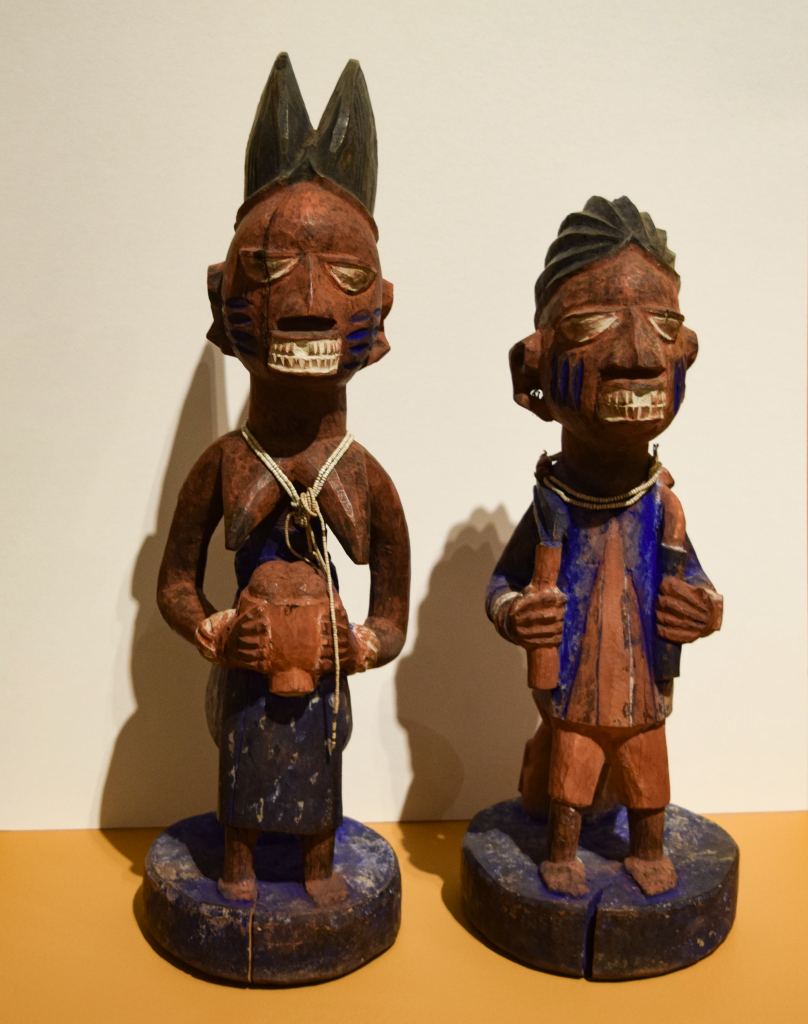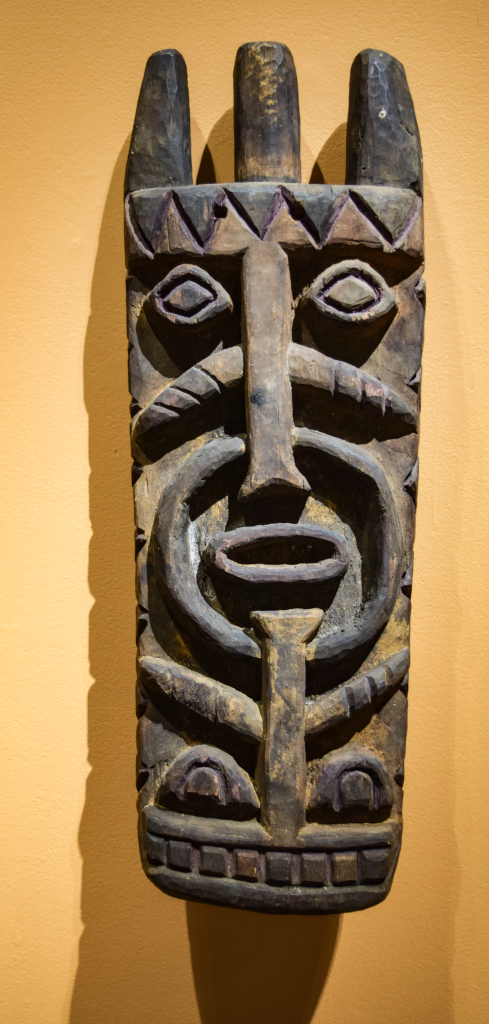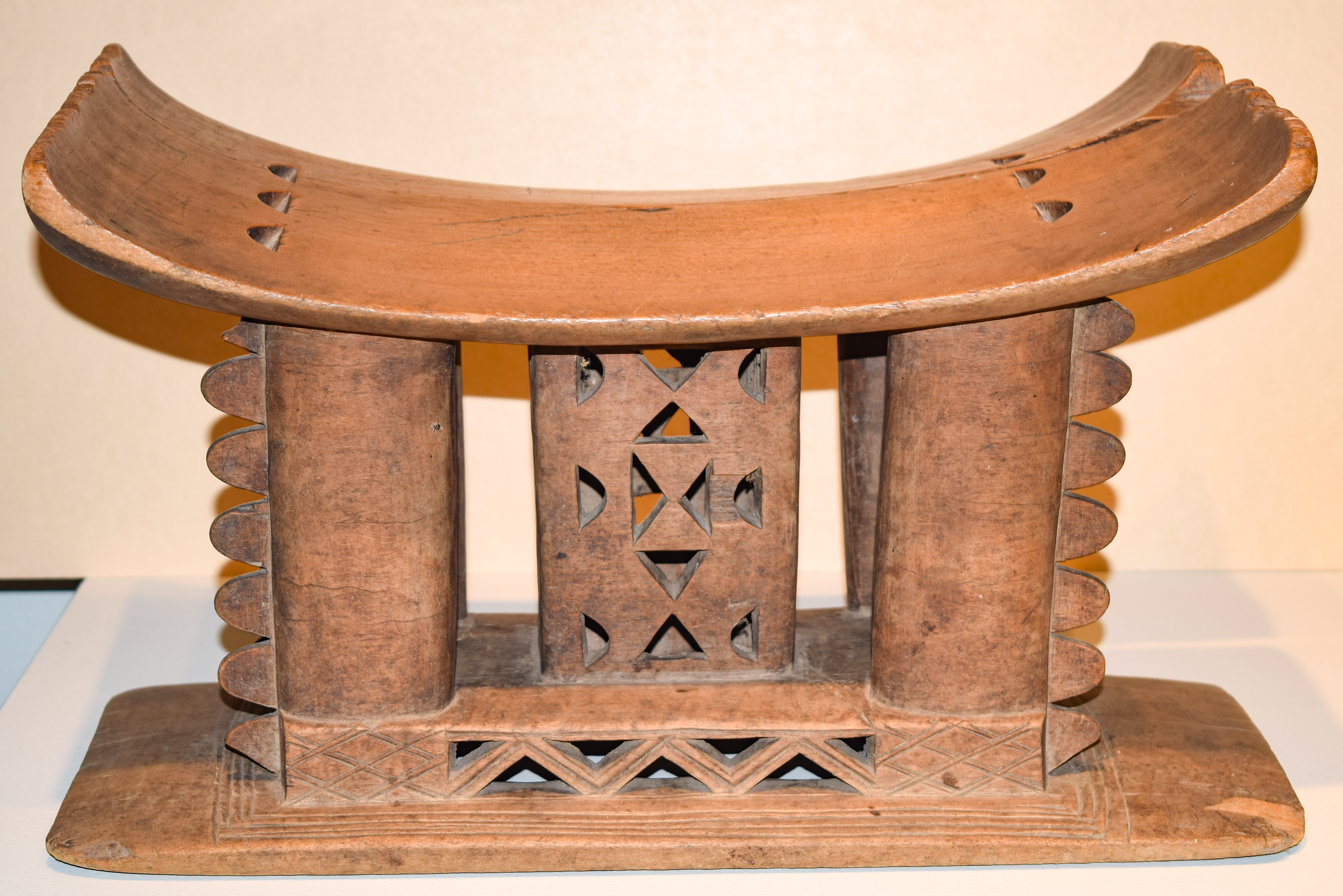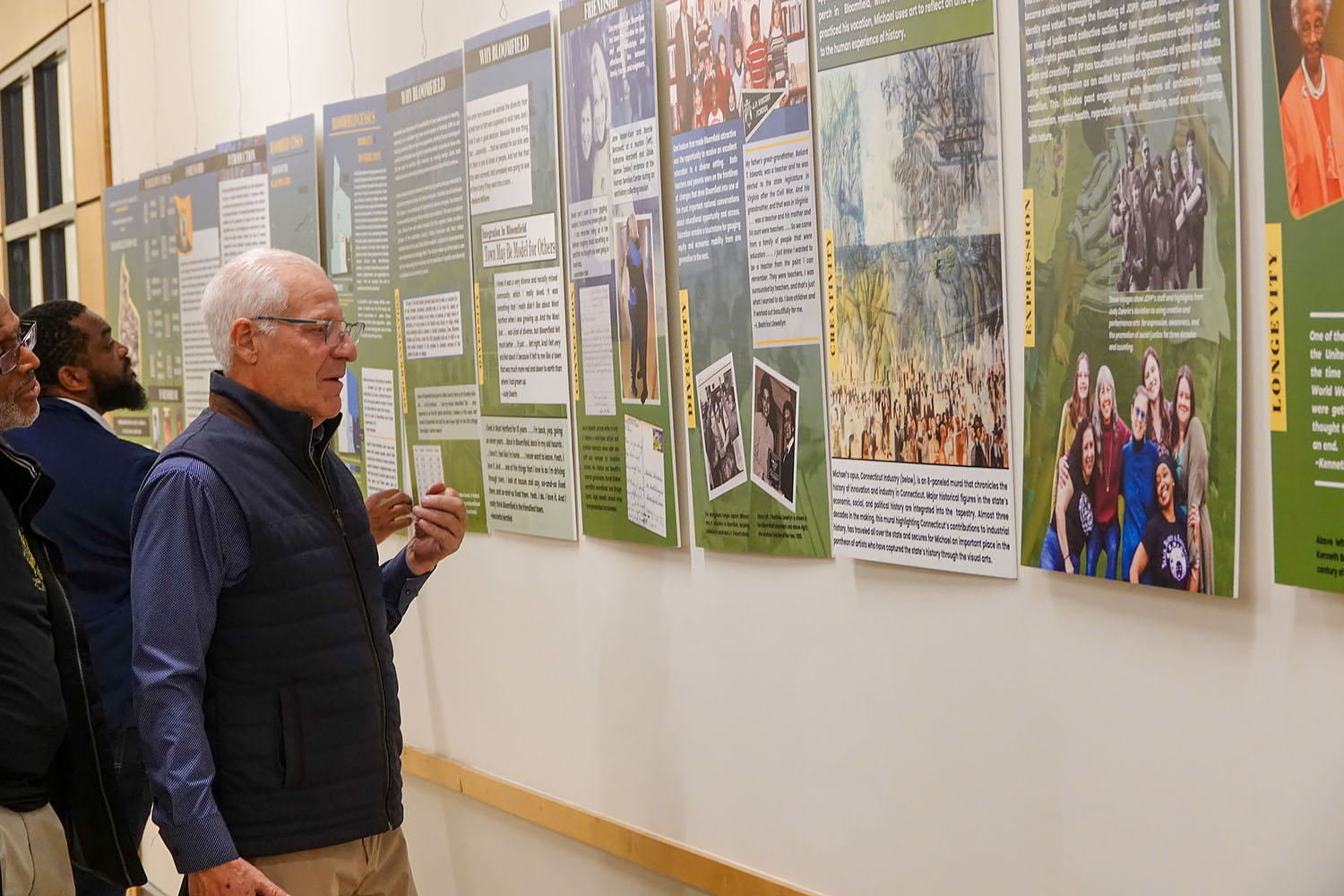While conducting research on the urban transformation of developing countries in Africa, Josef Gugler, emeritus professor of sociology, and his wife, Janine, a printmaker, also spent time with artists who created a variety of works that they purchased for their own collection of African art.
The couple recently donated the art they acquired to the William Benton Museum of Art, which features the exhibition “SOUVENIRS D’AFRIQUE: Arts of Africa from the Collection of Janine and Josef Gugler” through Oct. 13.

The Guglers’ collection, primarily from Western Africa, represents diverse ethnic groups that included a wide range of religious as well as utilitarian objects such as masks, carved figures, textiles, chairs, jewelry, dolls, household items, and musical instruments.
“The most interesting part of the exhibit is that the collection was put together so systematically by the Guglers while they were in Africa and they were able to document pretty carefully when they bought everything,” says Christopher B. Steiner, the exhibit curator, and director of the Museum Studies Program at Connecticut College. “It creates this time capsule of what was available to be purchased in Africa from the 1960s to 1980s when they were collecting.”
Probably the most interesting and original part of their collection was they were collecting directly from the artists. — Christopher Steiner, curator
Works represent diverse ethnic groups, including Yoruba, Baule, Igbo, Dan, Hausa, and Senufo peoples. In addition to the art collected by the Guglers, the exhibition features documentary video and photographs, as well as snapshots from their travels. Nations represented include Burkina Faso, Cameroon, Cote D’Ivoire, Democratic Republic of Congo, Ghana, Guinea, Guinea Bissau, Liberia, Mali, Nigeria and Sierra Leone.
“The kind of people today who would put together a collection such as this would be an African art historian or an anthropologist working in Africa. They would collect these objects as part of their research,” Steiner says. “It’s very unusual for someone who is not an art historian or anthropologist, like Josef Gulger, who was studying political systems and migration, to show enough interest to not only collect from the artist but to document that process.”
Among the works of art in the collection:
- Water Spirit Mask made from wood in Nigeria, circa 1961, representing the sea spirit Ngerebo.
- A wooden stool collected in Abidjan, Cote d’Ivoire, circa 1967-1972, made by an Asante artist in Ghana. In the Asante culture, stools are associated with the owner’s spirit so only the owner could sit on it. When not in use, the stool would be tipped on its side.
- “Arts of Ghana,” a 2002 film made by Christopher D. Roy showing narrow-band weaving textiles made by the Ewe and Asante. Most African textiles are woven in narrow strips which are then carefully arranged and hand-sewn together to create a cloth of the desired size.
- Polychrome figures of wood and blue and reddish-brown pigment created by a Yoruba artist in Nigeria from 1961, which symbolized the religious cosmology of the Yoruba people.
- Hats made of plant fibers and dyed leather worn by Hausa or Fulani farmers in Nigeria

A film Steiner, whose own field research in West Africa is focused on the construction of value and meaning in art through transnational exchange, incorporated into the exhibit is about masks and the rituals associated with them in Africa.
“From an African perspective a mask is not just the wooden part hung on the wall. It’s the dance, the costume, the whole performance is the masking. You can’t really understand that unless you see the video of people dancing these very vigorous dances. When it’s performed, the audience is only catching a glimpse of it as it spins around and turns. It’s very different to see it in motion versus seeing it stationary.”
Steiner notes the volume of small sculptures displayed in the Benton’s large East Gallery provided a challenge in designing the exhibition. “The Benton normally doesn’t display that much small sculptural work. I was amazed at how they were able to build so many pedestals so quickly. The installation is absolutely beautiful.”



